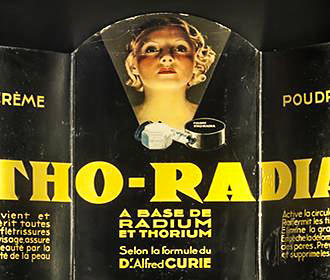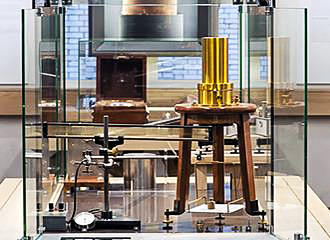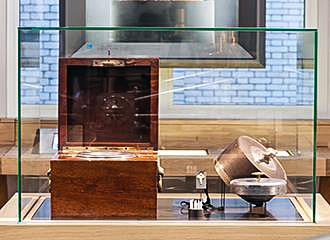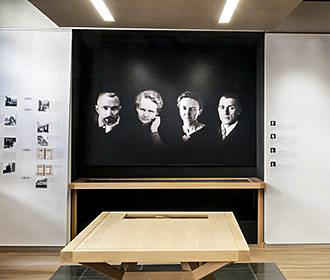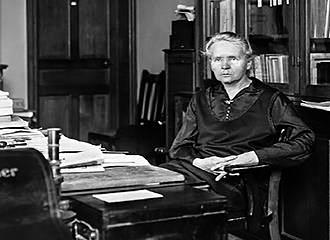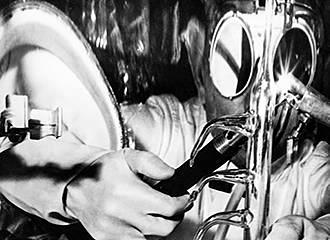Paris Musee Curie Museum named after Marie Curie
The Musee Curie museum is named after Marie Curie, which is a name that many of you will have heard of, as she was a scientist that became famous for her determination in the fight against cancer and this French Paris museum is dedicated to her. In fact, if you are on a well needed holiday in Paris or have been touched by cancer with loved ones, this will probably be of great interest and well worth a visit.
A bit of history on Marie Curie
It all began back in 1909 when the University of Paris and the Institut Pasteur, which also now holds the Pasteur museum, decided to join forces to build a large laboratory for Marie Curie that they called The Radium Institute.
The reason for the choice of name was decided upon after Marie and her husband, Pierre, discovered Radium back in 1898 and the laboratory was especially built for her between the years of 1911 and 1914.
The Radium Institute was divided in two and the Pasteur Pavilion housed the Pasteur Laboratory overseen by the Institut Pasteur and facing it was the Curie Pavilion which housed the Curie Laboratory supervised by the University of Paris and directed by Marie Curie.
It was in this building that she pursued her work for around 20 years, but her daughter, Irene and son-in-law, Frederic, followed in her footsteps and it was also here that they discovered artificial radioactivity, and they received the Nobel Prize for Chemistry in 1935 for this discovery.
The directors office was occupied by Marie Curie from 1914 to 1934, then by Andre Debierne until 1946, by Irene Joliot-Curie until 1956 and lastly by Frederic Joliot until his death. And when Frederic Joliot died in 1958, the directors of the Curie Laboratory wished to preserve the director's office.
About the Paris Musee Curie Museum
Located in the 5th Arrondissement of Paris in the same area as the Pantheon, it is here on the ground floor of the Curie Pavilion, which is actually one of the oldest buildings of the Institut Curie, that you can visit the Marie Curie museum.
Now the museum has progressed over time and in 1964, to celebrate the thirtieth anniversary of the discovery of artificial radioactivity, there were display cabinets installed in the entrance hall of the Curie Pavilion that hold some of the most important apparatus used up to the 1930s.
Then in 1967, which was the centenary of the birth of Marie Curie, her office and personal chemistry laboratory that were preserved intact were shown to privileged visitors, but due to the amount of people interested, in 1981 Marie Curie's chemistry laboratory was decontaminated and reconstructed.
Located on the ground floor of the Curie Pavilion, the Paris Musee Curie museum has been open to the public every weekday afternoon since 1992 and guided visits are provided, and in 1995 the ashes of Pierre and Marie Curie were transferred to the Pantheon.
Also, in commemoration of this, for the 75th anniversary of the Curie Foundation, plus the up-coming 100th anniversary of the discovery of natural radioactivity, the instruments exhibition room was renovated and enlarged to give its visitors an even better experience, yet alone the fact that the archives and instruments were all classified and conserved during this time.
The collection of objects, documents and archives of Marie Curie, Irene and Frederic have been enriched over the years by family donations, yet in 2002 the incredible collection was even further enhanced by the addition of archives and documents stemming from the medical and biological activities of the former Pasteur Laboratory and of the Curie Foundation.
Today, the Musee Curie Museum has a permanent exhibition where the exhibits retrace the history of radioactivity and its applications in medicine, along with the lives and work of Pierre and Marie Curie and of Irene and Frederic Joliot-Curie.
Within the permanent exhibitions, you can get to see Marie Curie’s office as it was at the time with furniture, objects, souvenirs, books, etc along with the adjoining small personal laboratory, which contains apparatus that was used by Marie Curie and her daughter Irene Joliot-Curie.
There is also a chemistry laboratory that dates from 1930 through to 1940, which houses many different types of apparatus such as flasks, test tubes and other chemistry instruments on the benches, providing a great insight into laboratory equipment that was used between the wars.
Other items on display behind glass include the laboratory notes of Pierre and Marie Curie that date from 1902 and show the calculation of the atomic mass of radium, which is actually still radioactive, and hence why the whole laboratory was thoroughly decontaminated!
And you will find that since further renovations of this Paris museum back in 2012, there are display texts in both French and English, which will make your visit even more enjoyable, and easier for the average person to understand some of the items on display.
However, if you are already in the field of science etc, there is also a historical resources centre that was created in 2003 and holds archives along with documentation on the history of the Curies, the Joliot-Curies and of the Institut Curie.
There are also archives of the Radium Institute and the Curie Foundation, along with the history of radioactivity and oncology that is utilized by teachers, doctors and historians for their studies, but this is only open by prior appointment, yet well worth taking the trouble to organize when on your holiday in Paris, France.
Visiting the Paris Musee Curie Museum
The Musee Curie museum is now open on a Wednesday to Saturday from 1pm through to 5pm, although it is closed on all other days including all National French Holidays such as 1st May. This Paris museum is also closed during the month of August plus during the last week of December and throughout the festive season until after the first week of January.
Although admission to the museum is free for all to enter, a donation to the Institut Curie is requested and gratefully received to keep up their work, yet not compulsory, but there is a donation box in the form of an urn located at the entrance of the museum.
But this Paris museum does hold guided tours in both French and English for groups only by prior reservation, and organised by the Musee Curie staff, these are held in the morning on special openings that have been pre-arranged on a Wednesday to Friday.
However, we would like to point out that if you are on holiday in a group and would like a guided tour, then you do need to book at least 1 month or more in advance for one of these special tours, and they are for a minimum of 10 people.
Another point we should also mention. When it comes to accessing this French museum, please bear in mind that the actual entrance to the museum is normally 11 Rue Pierre et Marie Curie.
So when it comes to Paris public transport, the nearest Metro stations are the Place Monge stop via line 7 or the Cardinal Lemoine stop via line 10, plus you also have the RER train station called the Luxembourg stop nearby serving line B.
In addition to these, the Paris bus numbers 21, 27, 38, 47, 82, 84, 85 and 89 along with the Noctilien Night Bus Service via lines N14, N21and N122 will also get you within walking distance of the Musee Curie museum that celebrated the birth of Marie Curie with a dedicated exhibition in 2017.
